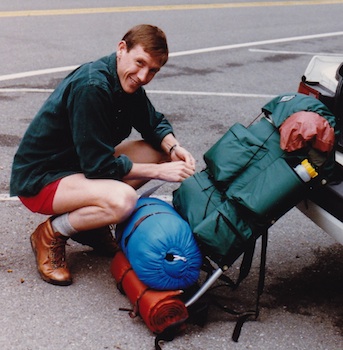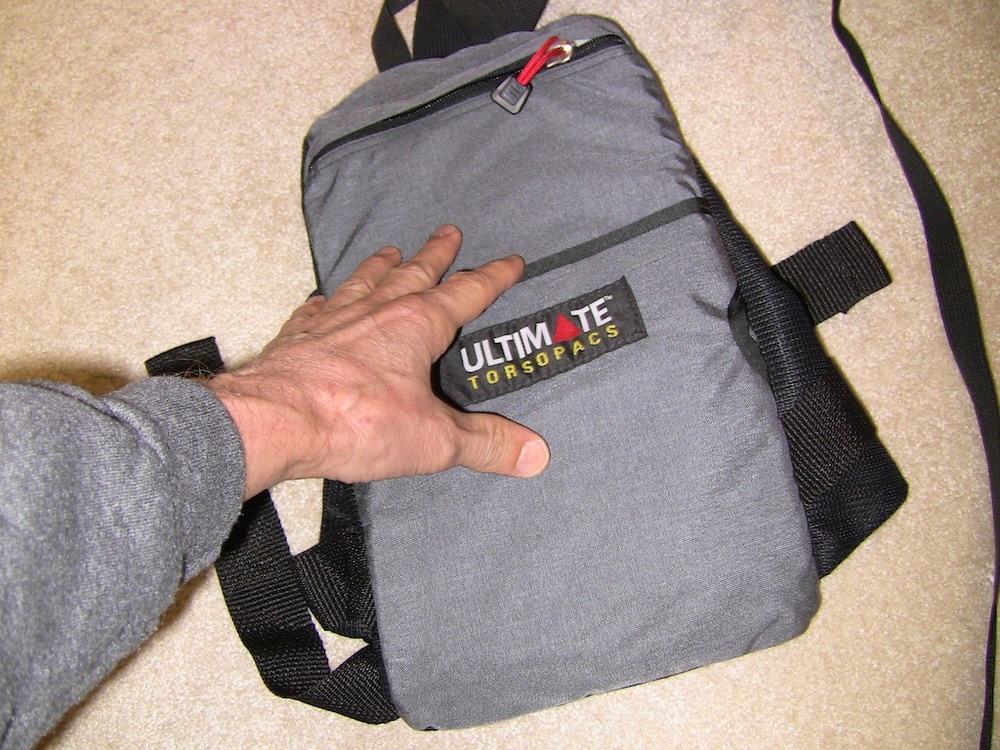 50 plus pounds in 1986I thought I'd share some thoughts on ultralight backpacking as the season is upon us. One could argue that with available products today, carrying a 40 lb+ load on just about any hike is unnecessary. But whether to "ultralight" or not really depends on two things: experience and type of trip.
50 plus pounds in 1986I thought I'd share some thoughts on ultralight backpacking as the season is upon us. One could argue that with available products today, carrying a 40 lb+ load on just about any hike is unnecessary. But whether to "ultralight" or not really depends on two things: experience and type of trip.
Experience: The only way to get comfortable in the outdoors is to get out there. Let me use myself as an example. My first Wonderland Trail trip was in 1986 over 6 days and 5 nights. My pack was so weighty that I had to put it on a stump to be able to hoist it on my shoulders, so my estimate is the pack weighed in excess of 50 lbs.

|
|
|
Although at that time I was an "experienced" day hiker, that was to be my first real backpack. My borrowed pup tent weighed more than 12 lbs, my sleeping bag was over 5 lbs, I carried a flashlight that had a big magnet on it (for attaching to things like a refrigerator), my knife was all steel in a huge sheath; the list goes on. Although I was in good shape, I can tell you schlepping that load up and down the 21,000' of the trail was pretty tough, especially the one day I put in over 20 miles. So began my quest to lighten up my load, and my equipment needs and philosophy are ever changing to this day as my experience increases. In September of 1999 I packed my lightest kit ever on the WT: something between 1 and 2 lbs. How is this possible? It was during a period when I was running ultras, from 50Ks to 100 milers. I decided to crank out the trail over a weekend with a pristine weather forecast. Since my plan was to trot the trail with probably no break, I didn't need a tent, sleeping bag, pad, or any of those things that a typical backpacking trip would entail. I used an Ultimate torsopac with a water bladder with integrated filter and carried a light jacket, some super light rain gear, a headlamp and food. I did try to get some rest with all my clothes on on top of a picnic table at Ipsut Creek for 4 hours, but otherwise I was constantly moving and managed the trail in 36 hours. To some people this meager amount of equipment may seem insane, but in fact it's a regular occurrence for people who run the trail and have the necessary experience to feel comfortable doing so.

 Wonderland trail pack 1999 Wonderland trail pack 1999 |
|
|
|
This brings into account the other factor, type of trip. For someone spending 7-14 days doing the wonderland, 1 pound of gear aint gonna hack it. Before I pack for a trip, I look to what the distance and conditions are, the objectives of the trip, the weather forecast and what are my Minimum Safety levels…..were I to become incapacitated and unable to ambulate, do I need to be Comfortable, Tolerant, or Miserable? Usually I go for something between Tolerant and Miserable. A good example of this would be a WT attempt in 2011 (the high snow year) with my daughter where we were going for 48 hours. We planned on one stop at Granite Creek, starting CCW from Longmire. We had a Blizzard Tube, some homemade M50 bivy type envelopes, a cuben GG tarp, and clothes: essentially a very low base weight of less than 4 lbs apiece (my pack was 4.7 ozs, hers 8 ozs). Unfortunately we were stymied at Panhandle Gap at 11 PM by frozen snow with no boot track and had to do an unplanned bivy at 7000' with this setup. Even in these conditions we had a better than tolerable evening, but not quite comfortable. My point is that my experience with similar to worse conditions, and her experience growing up with a dad who exposed her to these situations, made this situation plenty safe with lots of margin. A beginning backpacker would be ill advised to attempt a trip like this and would be carrying more gear aimed at daytime travel and camp time.

|
|
|
 not ultralight! 2012 ONP marmot surveyLast year my daughter and I did another ONP marmot survey and our packs were not "Ultralight." This again comes under the auspices of type of trip: we were packing more for comfort in base camp knowing that our days would be spent bushwhacking off trail. We had a portable shower, excellent food, 3 person tent, sleeping bags and pads, not to mention other equipment involved in the survey including a bear canister. Ultralight in this instance would have made for a miserable experience.
not ultralight! 2012 ONP marmot surveyLast year my daughter and I did another ONP marmot survey and our packs were not "Ultralight." This again comes under the auspices of type of trip: we were packing more for comfort in base camp knowing that our days would be spent bushwhacking off trail. We had a portable shower, excellent food, 3 person tent, sleeping bags and pads, not to mention other equipment involved in the survey including a bear canister. Ultralight in this instance would have made for a miserable experience.

|
|
|
If you consider that I've been backpacking for over 30 years, have trail ultra and some paltry mountaineering experience, and even survival school training (Air Force), and the fact that one of the ways I truly enjoy the outdoors is to cover long distances over short periods, then you may appreciate that I can go with very low base weights and have plenty of safety margin. I spend little time camping and most of the time moving, in fact I quite enjoy night hiking. This is not the same as a "typical" backpacker who likes to linger on the trail, spend time in camp and/or enjoy a hike like the Wonderland in a completely different fashion. The packing needs will be very different and perhaps aiming for "Lighter" versus "Ultralight" may be more appropriate. It takes a certain mindset to slice your pack contents down and this can only come with experience and experimentation on the individual's part, finding out what works for them. What's appropriate for Joe Valesko (Zpacks: PCT, Te Aurora and Continental Divide ultralighter) may not be appropriate for you. Plus I haven't even touched on the expense of some of the products that deliver great performance in low weights, that's another topic. My thoughts essentially are don't get caught up in the "Ultralight" game simply because it's the topic of the day and you are feeling shamed into it. It's important to assess your needs, your experience, your budget, your type of trips and understand that your motivation for changing gear and perhaps lightening your load is yours and yours alone. If you are happy with the load you are carrying and enjoying yourself outside and see no need to hop on the "Ultralight" bandwagon aside from others telling you you should, then don't.

|
| under 4 pound base weight for 2010 47 hour Wonderland Trail hike |
|
 50 plus pounds in 1986I thought I'd share some thoughts on ultralight backpacking as the season is upon us. One could argue that with available products today, carrying a 40 lb+ load on just about any hike is unnecessary. But whether to "ultralight" or not really depends on two things: experience and type of trip.
50 plus pounds in 1986I thought I'd share some thoughts on ultralight backpacking as the season is upon us. One could argue that with available products today, carrying a 40 lb+ load on just about any hike is unnecessary. But whether to "ultralight" or not really depends on two things: experience and type of trip.  not ultralight! 2012 ONP marmot surveyLast year my daughter and I did another ONP marmot survey and our packs were not "Ultralight." This again comes under the auspices of type of trip: we were packing more for comfort in base camp knowing that our days would be spent bushwhacking off trail. We had a portable shower, excellent food, 3 person tent, sleeping bags and pads, not to mention other equipment involved in the survey including a bear canister. Ultralight in this instance would have made for a miserable experience.
not ultralight! 2012 ONP marmot surveyLast year my daughter and I did another ONP marmot survey and our packs were not "Ultralight." This again comes under the auspices of type of trip: we were packing more for comfort in base camp knowing that our days would be spent bushwhacking off trail. We had a portable shower, excellent food, 3 person tent, sleeping bags and pads, not to mention other equipment involved in the survey including a bear canister. Ultralight in this instance would have made for a miserable experience. 
